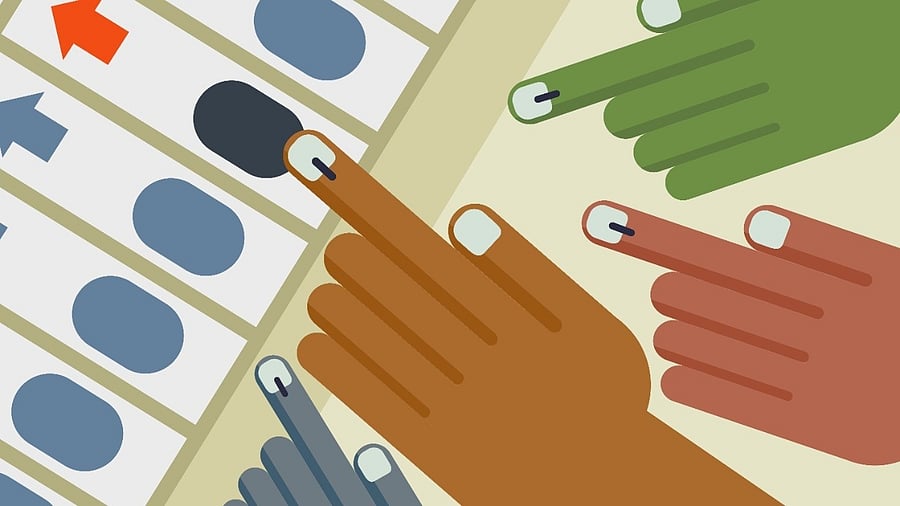
A representative image of voting.
Credit: iStock Photo
With the Mizoram, Chhattisgarh, Rajasthan, Madhya Pradesh, and Telangana witnessing polls this November, the political battle in the states has intensified. All political parties are trying to woo the voter with promises, campaigns, and manifestos, but citizens who are not convinced by any of the parties have the option to elect NOTA (None Of The Above).
NOTA is one of the options available in the Electronic Voting Machine, for people who disagree with the political parties in the contest.
What is NOTA?
In India, if a voter does not support any of the candidates contesting in a particular election, they have the option to select NOTA as a measure of registering their disagreement. The option provides voters the power to reject all the candidates listed on the Electronic Voting Machine (EVM).
When was it first used?
NOTA was used for the first time in the 2013 Assembly elections in five states - Chhattisgarh, Mizoram, Rajasthan, Delhi, and Madhya Pradesh - and later in the 2014 General Elections. It was introduced into the electoral process following the 2013 Supreme Court directive in the PUCL versus Union of India case.
The Supreme Court reasoned that the NOTA option would allow voters to express their discontent with the political parties and the candidates they put up and thus, help cleanse the political system.
Does it have any impact on the results?
NOTA has no electoral value in the Indian system. Even if the maximum votes are given in favour of NOTA, the candidate with the largest number of votes, which could theoretically even be just one, will still be declared the winner.
What purpose does it serve?
Despite NOTA not having an electoral value, it is still a very important tool for voters. It gives voters an option to express their discontent with the candidates in the fray.
